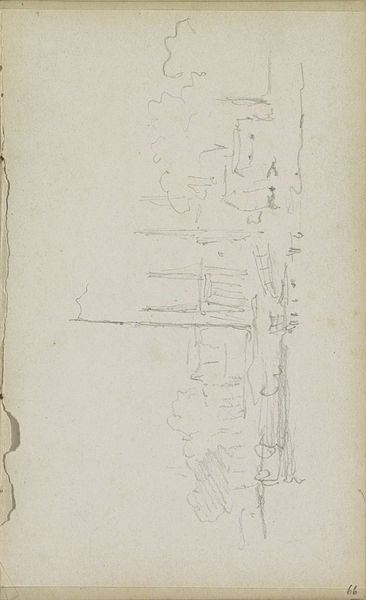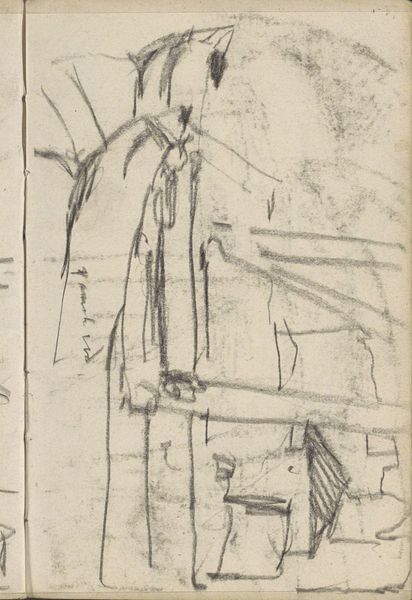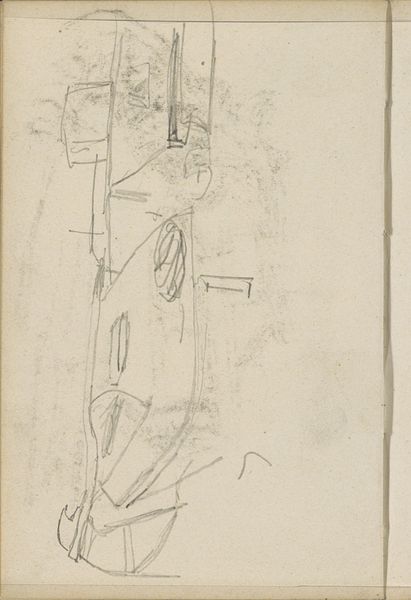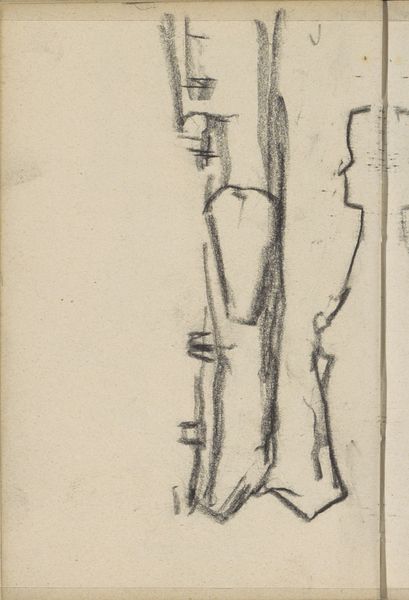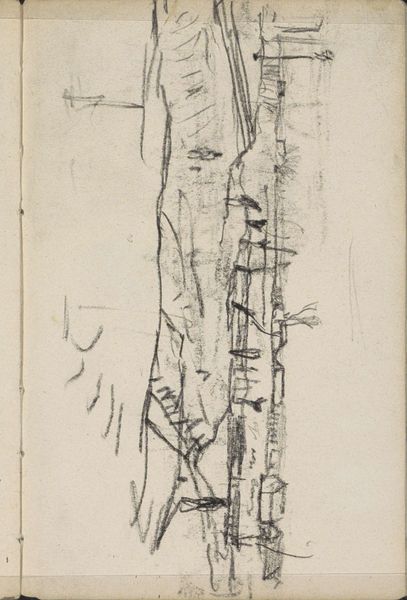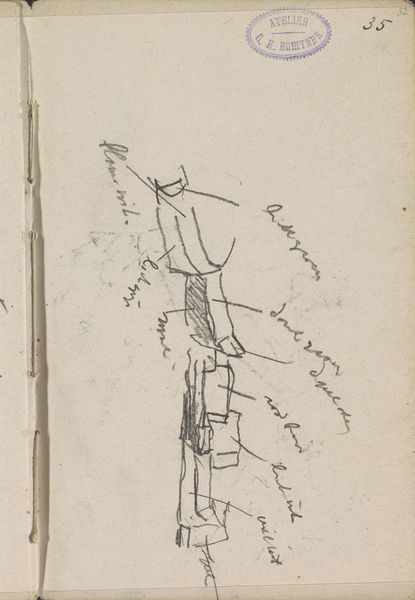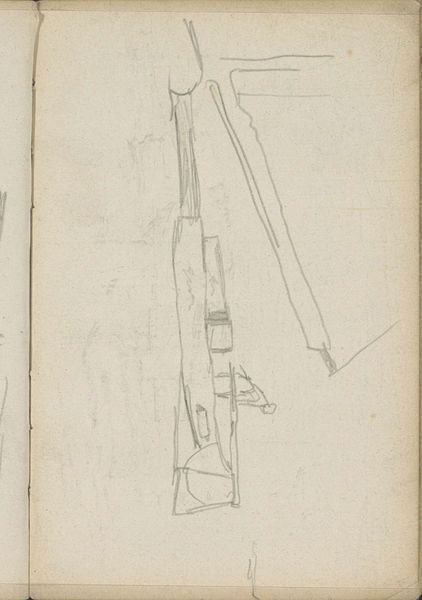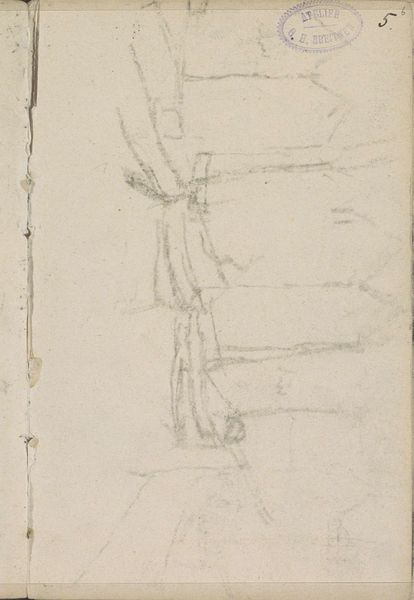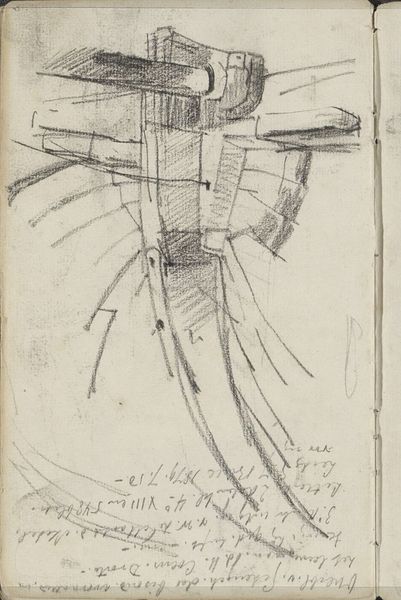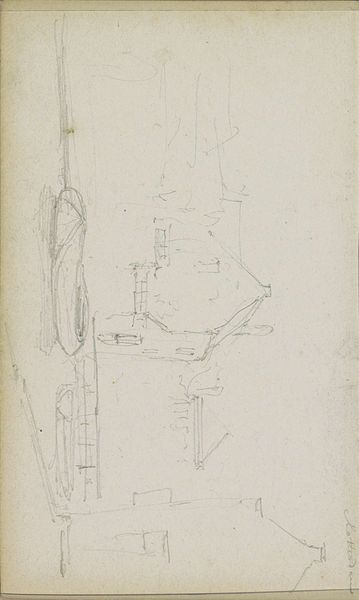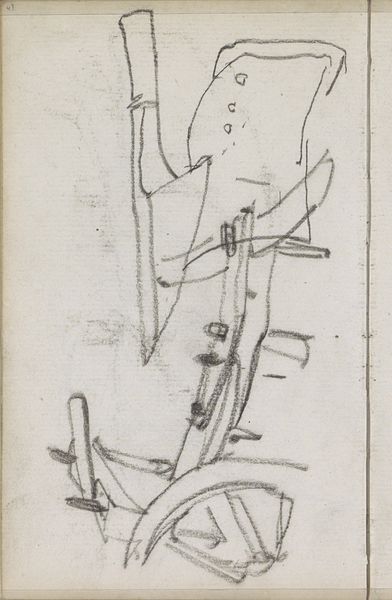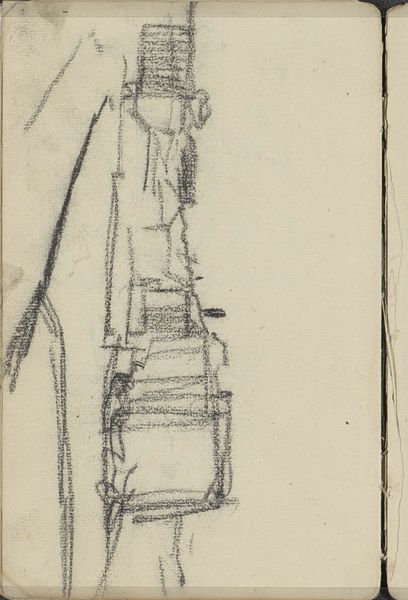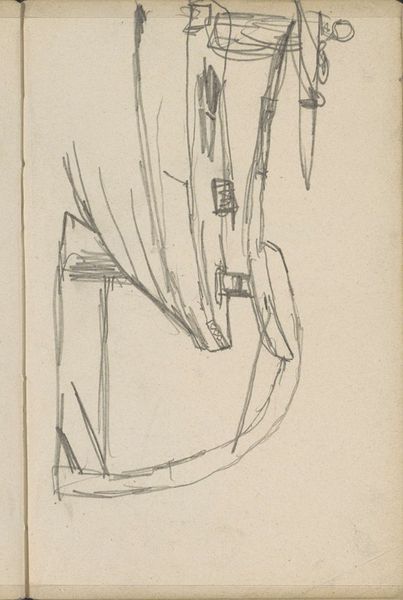
Copyright: Rijks Museum: Open Domain
Editor: This is George Hendrik Breitner’s "Two Moored Ships," a pencil drawing from around 1903, housed at the Rijksmuseum. It has the informal feel of a quick sketch, almost like a page from a personal sketchbook. What do you see in this piece? Curator: Beyond just the representation of two ships, I see a commentary on labor, industry, and urban development during the turn of the century. Breitner was known for capturing the grit of Amsterdam. Consider the historical context: this drawing emerges from a period of intense social change. How does the simplicity of the lines reflect or perhaps obscure the complex realities of maritime labor and trade at that time? Editor: I hadn't considered the ships as symbols of labor. The drawing feels so immediate and casual. Curator: Precisely! It's this tension between the casual sketch and the weighty subject matter that interests me. Are these ships simply part of the scenery, or are they a subtle reminder of the global networks of trade, the exploitation of workers, and the environmental impact of industry? Look at how Breitner uses line. Does it romanticize or critique these ships and their role in a changing society? Editor: That really shifts my perspective. I guess I was drawn to the aesthetic, the quick lines, but not the social implications. Curator: It's easy to get caught up in aesthetics. But as scholars, it's our role to unpack the layers, to ask: whose stories are being told, and whose are being omitted? And how does the artwork, even a seemingly simple sketch, participate in these narratives? Editor: This has given me a lot to think about. Thanks for sharing your perspective! Curator: Likewise. It’s through these conversations that we bring historical works into dialogue with contemporary issues.
Comments
No comments
Be the first to comment and join the conversation on the ultimate creative platform.
